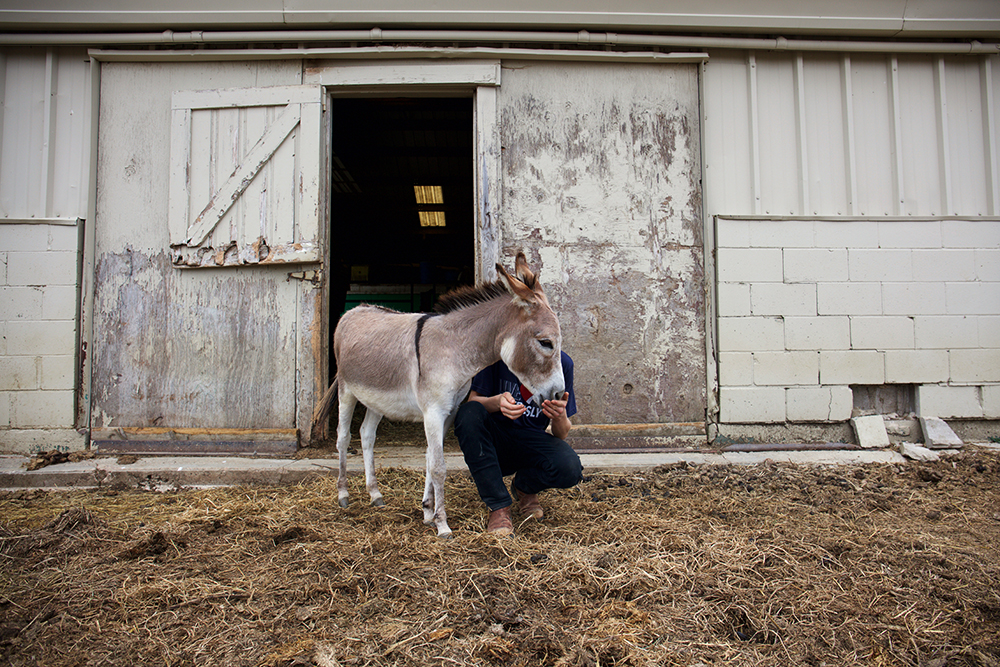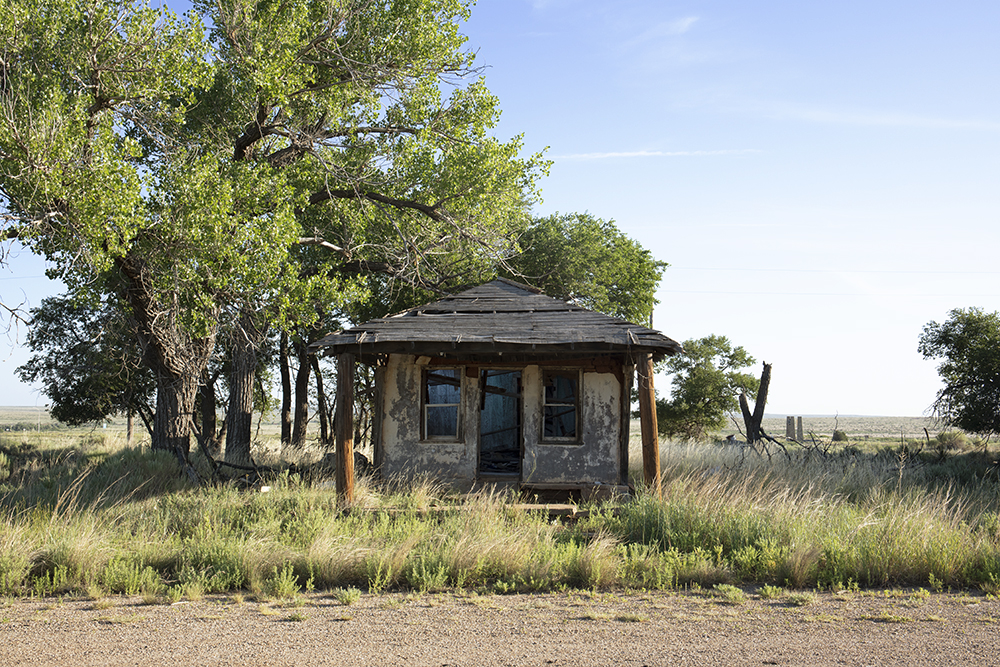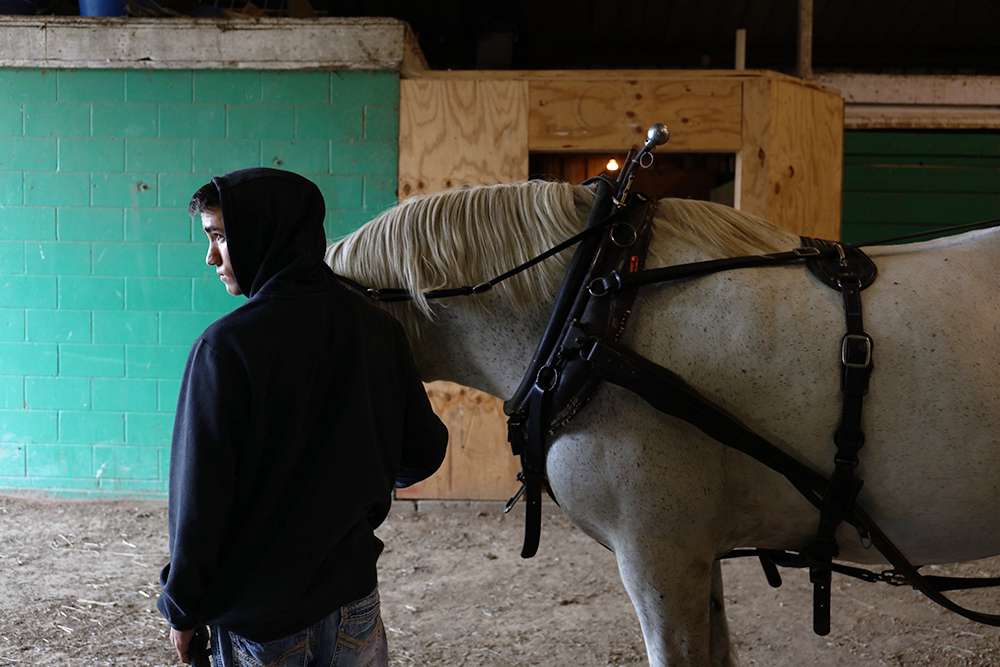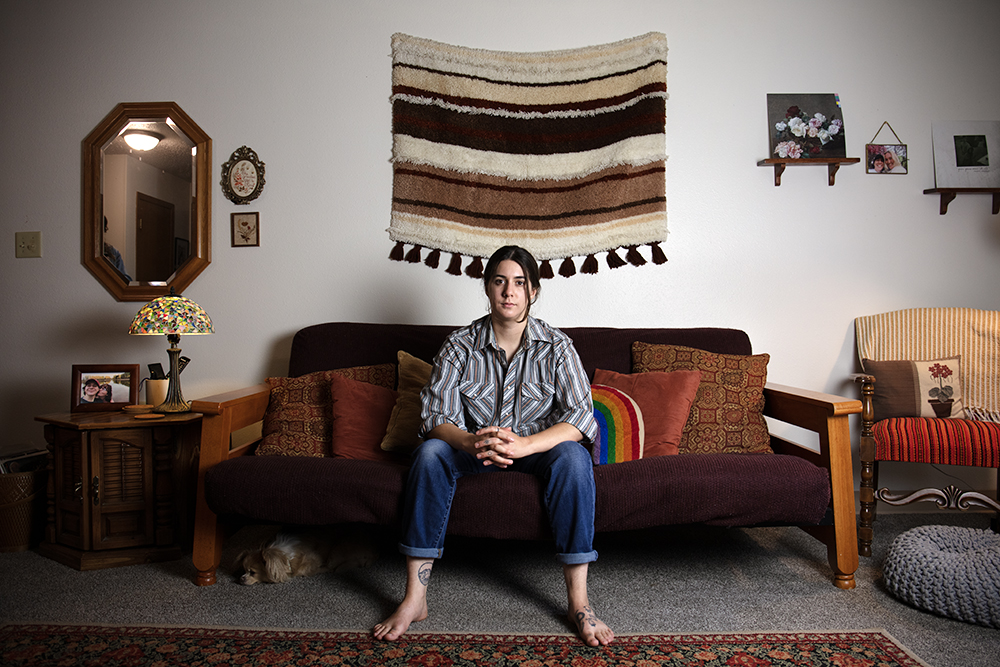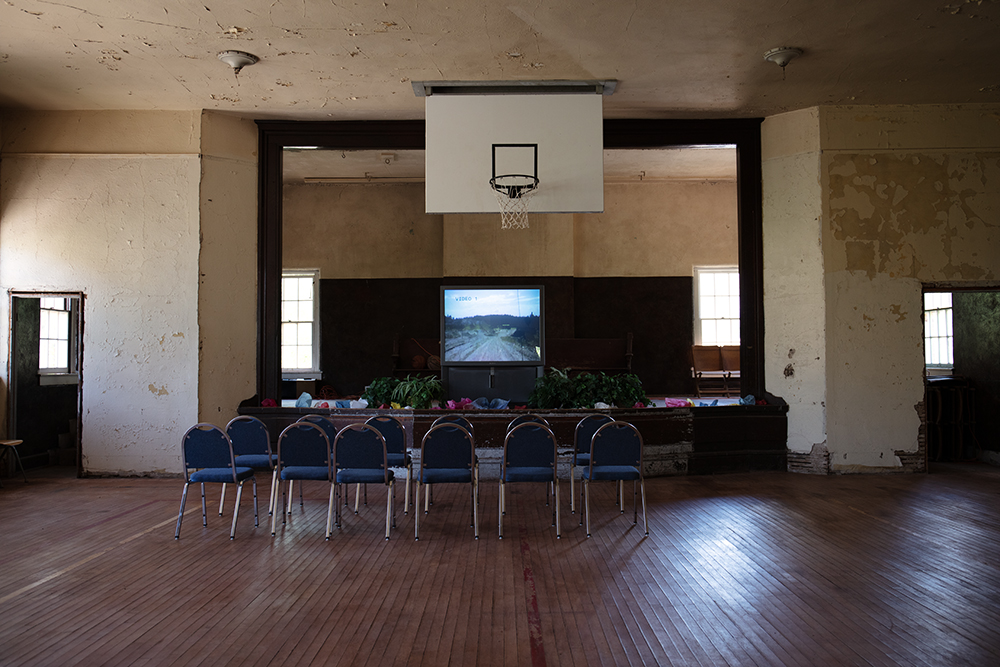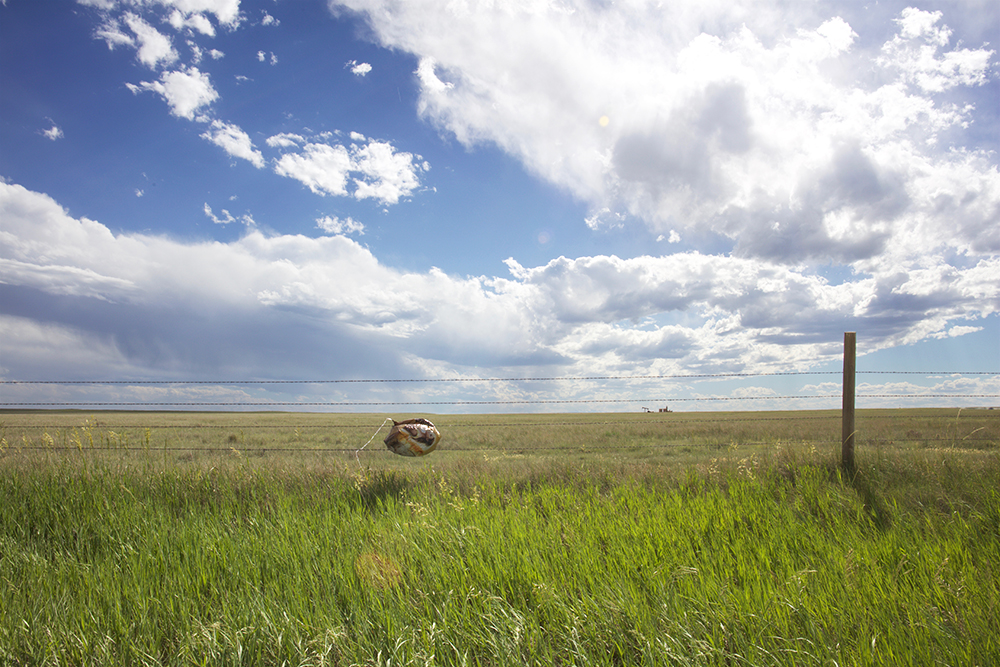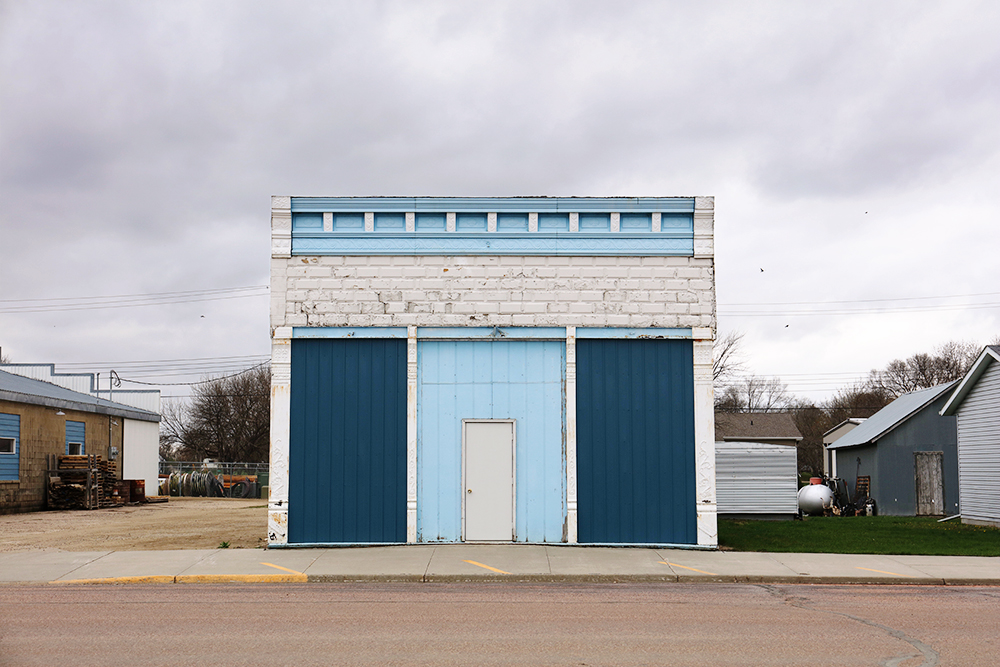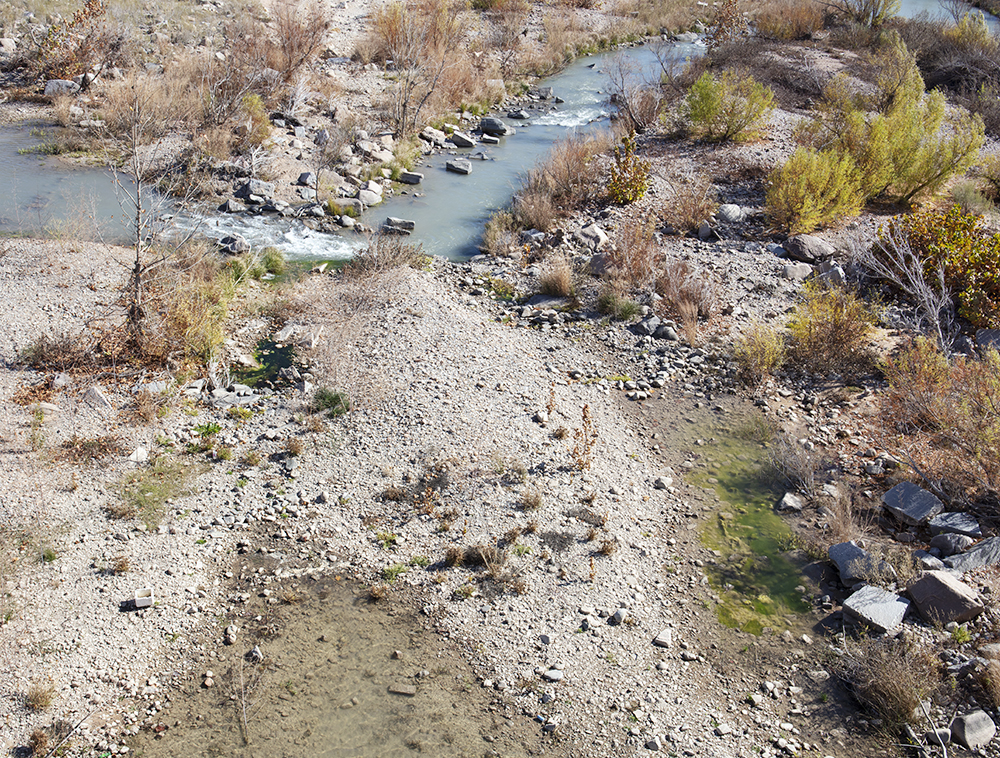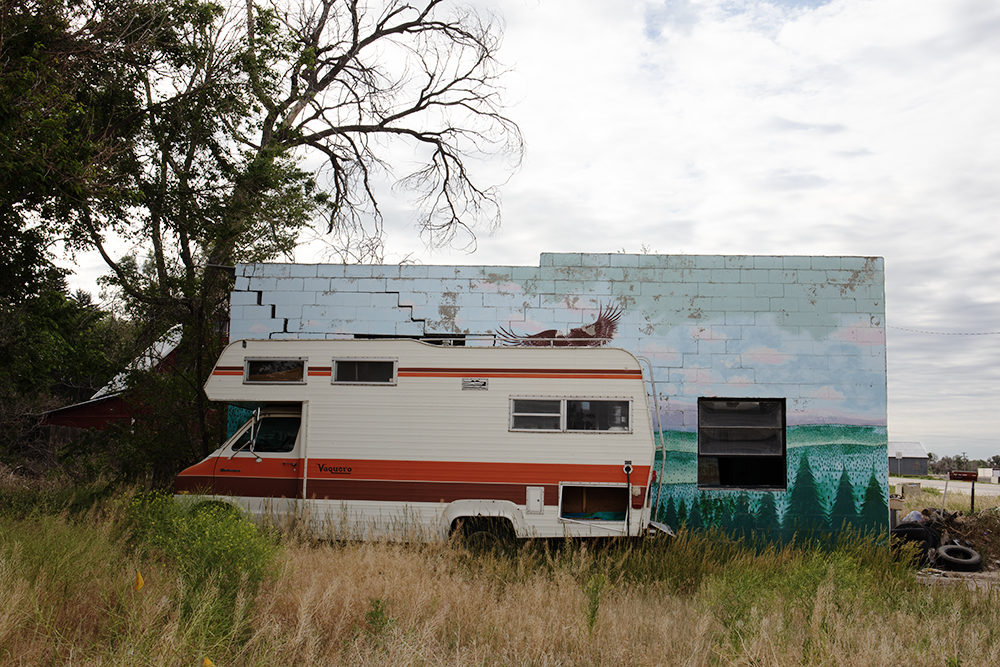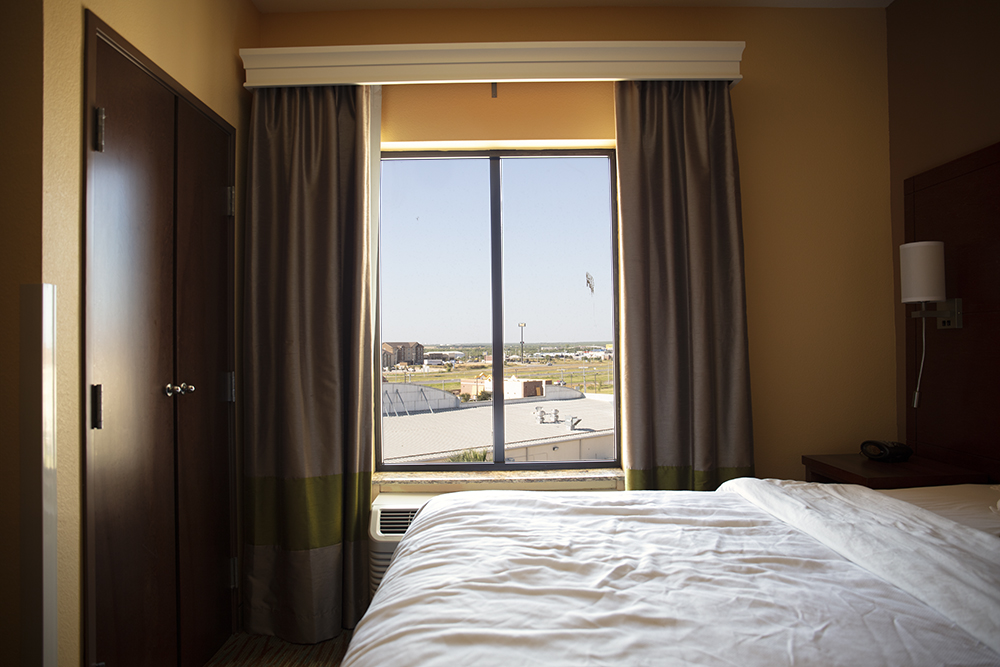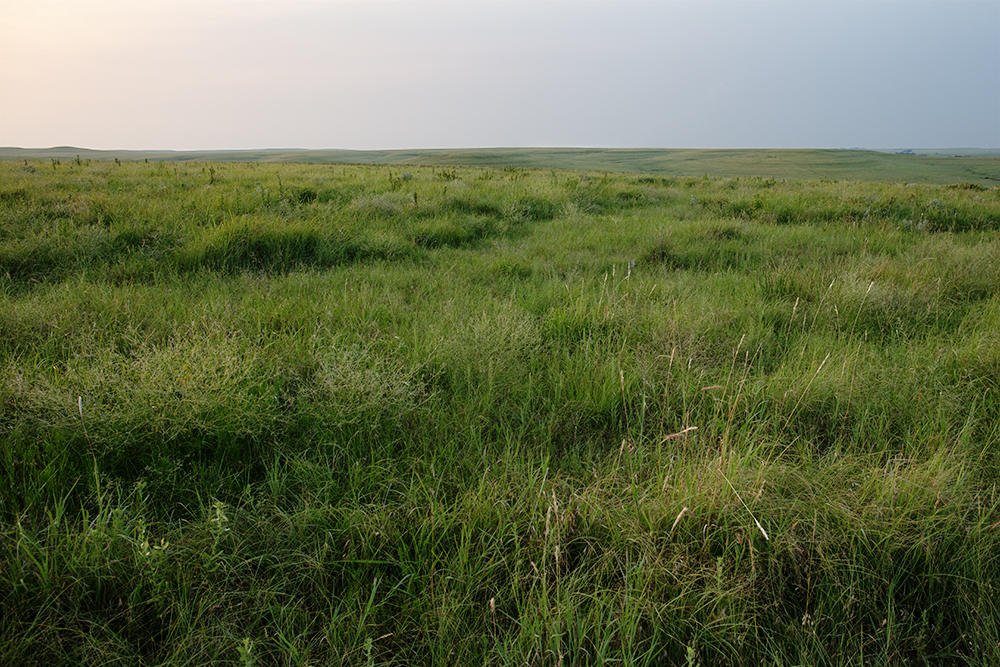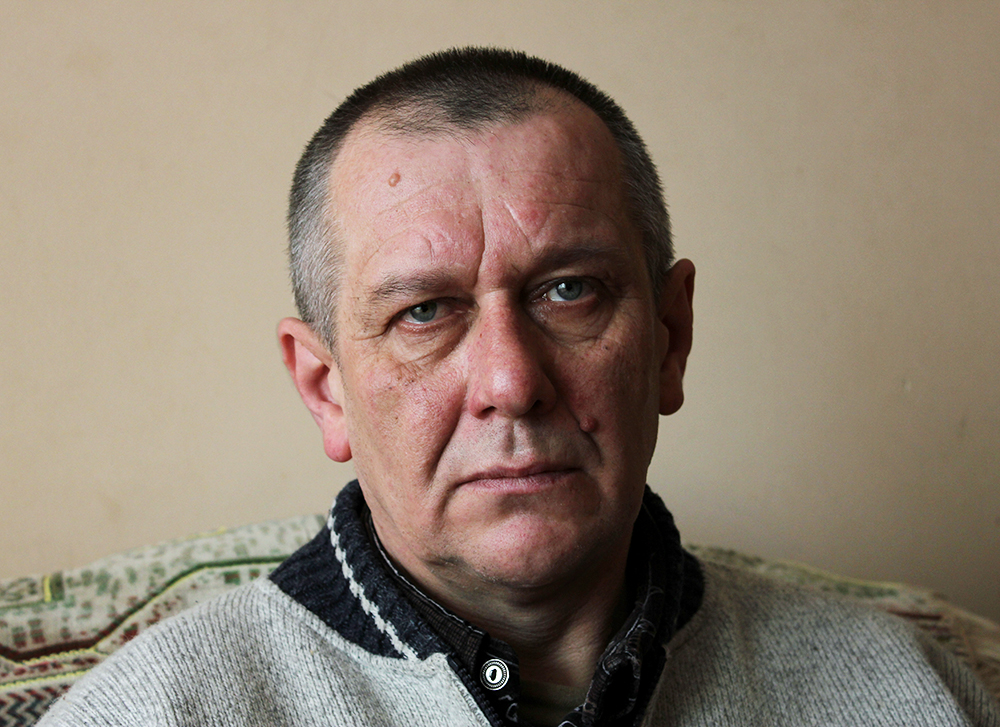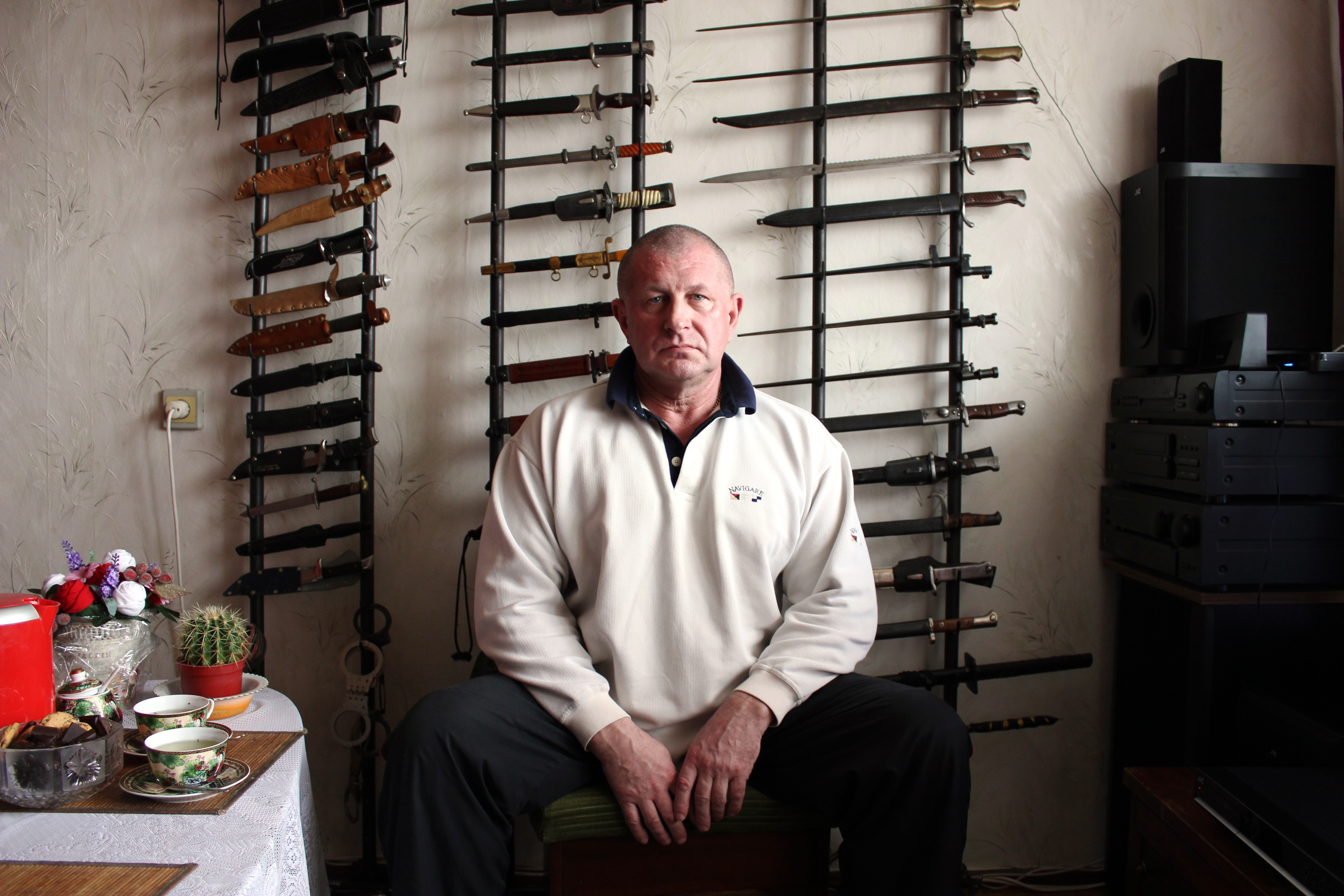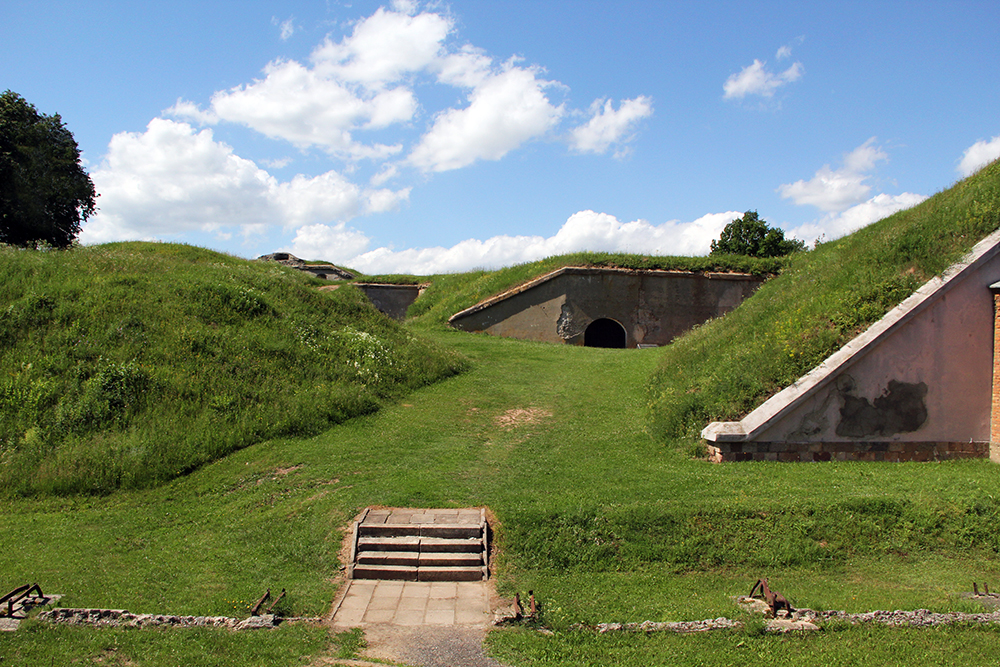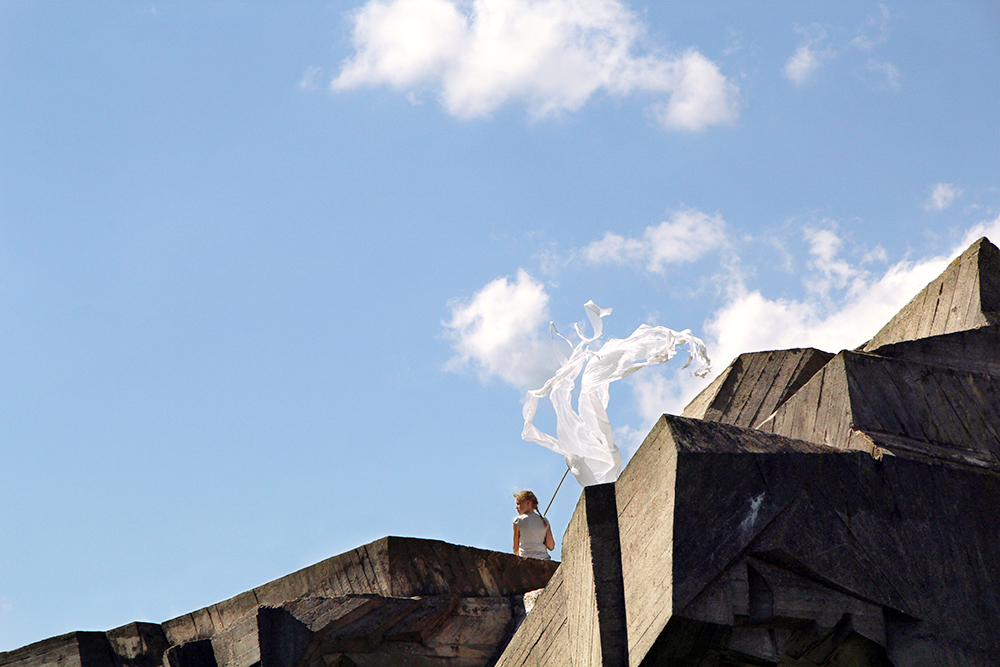Anna Reich: This Land
This week, we will be exploring projects inspired by place. Today, we’ll be looking at Anna Reich’s series This Land: Landscape, Memory, and Identity on the Plains.
Sioux Falls, South Dakota, has a small but spirited art community. Anna Reich is one of the few fine art photographers in the area. I first met her when I started adjuncting for her department. I had seen her work in the region and was blown away by the strong narrative and formal explorations of her images. We had wonderful conversations about photography and education in our brief pandemic-era meetings. Anna explores not only a place but fully dives into the culture, stories, and histories of the local landscapes. Whether in another country or her backyard, her images are complex records of present histories. The narratives she weaves through her series hold authenticity to their place.
Anna Reich is a visual artist who investigates memory, identity, and landscape and has been exhibited throughout the U.S. and abroad including the Sioux City Art Center, the Washington Pavilion, the Balzekas Museum in Chicago. She has received numerous grants including a travel grant from the Foundation for Contemporary Art (2013), a Fulbright Fellowship (2013-14), an Artist as Activist Research Grant from the Robert Rauschenberg Foundation (2015), the Humanities for the Public Good Grant (2019-20) and the Sustaining Good Grant (2023) both from the Council for Independent Colleges, and the Jane and Charles Zaloudek Faculty Research Fellowship (2022-2023). Her upcoming book I Try Not to Think of Afghanistan is being published by Cornell University Press and will be available in May of 2024.
This Land: Landscape, Memory, and Identity on the Plains
My artistic practice is based on the belief that the process of creating a visual record is as valuable as the existence of one. I use the camera as a tool to translate experience and meaning, often being both celebratory and critical of photography. Much of my work from the last ten years has been socially engaged; first, investigating issues relating to cultural trauma and post-traumatic stress and second, questioning the use of land and development of unsustainable communities in the western half of the United States.
My photographic and social practice have a strong overlap; images often serve as a record of encounters, relationships, and observations. As we collectively traverse increasingly tumultuous and divisive times, with steadily developing political and environmental threats, and marked by perpetual and often seemingly uncontrollable technological advancements, it is my goal to make photographs that raise questions about how identity is shaped, memory is developed, and forces outside of our control impact our fate.
This Land: Landscape, Memory, and Identity on the Plains engages with the Great Plains as a landscape riddled with scars from a problematic history and a region where people attempt to carve out their lives in a climate that is often isolating and inhospitable. Shaped by the lasting impacts of manifest destiny, with all its flaws and contradictions, the plains have a perpetual tension between the past and present. This project documents the scarification of the land and the abandonment of communities reliant on unsustainable industries; at once imagining the Great Plains as both an historic and contemporary setting of national importance while simultaneously seeing the region as something discarded and forgotten. As fabled American ideals have been both dismantled and scrutinized in recent years, the perception of the Great Plains, and specifically rural America, has also shifted significantly. The romanticized myths—for which photographs share in the responsibility of constructing—have been a recurrent if not constant cultural paradigm: a land of plenty, of opportunity, of freedom, and of hope characterized by rugged individualism. The reality has been a stark contrast. The insatiable desire for land and natural resources bears significant responsibility for the displacement and ultimate genocide of Native American Tribes. Despite the fervent quest for land and power that drove settler colonists westward across the plains, today this region has the lowest population density in the United States. The increasing challenges in the present day United States, including pervasive inequality and oppression, consistent lack of sustainable means of economy, and rising susceptibility to polarization, are magnified in rural communities across the plains. The skeletal remains of once bustling communities pepper the landscape of the Great Plains providing lasting traces of human and environmental disruption; a bleak record of the past that foreshadows a possible future based on continuing unbridled and unsustainable abuse of the environment.
Epiphany Knedler: How did your project come about?
Anna Reich: In the beginning, I wasn’t even sure this would be a “project” in the formal sense. A tenure track teaching position brought me to South Dakota in 2015. Outside of my interview, my only time in the Great Plains was driving on I-80 from Chicago to Sacramento. I lived and worked in Lithuanian for the better part of 2013-2015 and I was focused on post production of that work for the first year or so of my teaching appointment at Augustana. In 2017, I began photographing South Dakota, Colorado, and Wyoming primarily with the goal of building a better understanding of the region; its landscape and history. My motivations were driven by newfound knowledge—and guilt—that family members had previously homesteaded in this area; my 3rd and 4th great-grandparents acquired land in Armour, South Dakota because of the Homestead Act of 1862 and their child, my 2nd great-grandma, was a homesteader in Colorado before moving her family to California during the Great Depression (where the family remains and where I was born). The Homestead Act inarguably accelerated the seizure of Native land by white settlers, the displacement of Native people, and numerous other genocidal efforts by the United States.
In my desire to embrace change and learn more about the central part of the United States, I decided to begin working in Texas to see how different my images would be. I made multiple trips to Texas in 2019, working from the U.S./Mexico border to the northernmost part of the Texas panhandle and from Double Bayou to El Paso. I began noticing that there were textures, color palettes, and similarities in light intensity emerging across my photographs from the Southern and Northern Plains right as the pandemic hit in 2020. Everything was shelved for over a year.
Late in 2021, I started to imagine what a project might look like if it addressed aspects of history as well as tried to grapple with the challenges and changes of the present. At first, I thought this project might be about “the West” and all its myths, perceived grandness, and contradictions, but visually it made sense to work within a slightly more homogenous landscape and ask more questions. (In no way am I suggesting the Plains look the same, there is so much variety here. Just as a counterpoint, the Rocky Mountain Region looks radically different.) If this was (or were) an experiment, the region and landscape became the constant; environmental, social, and historic concerns became the variables. Motivated by a recurring question, “what does it mean to be the descendant of a homesteader returning to this place?” I approached this investigation with a mindset that shifted fluidly across seeing myself as an insider, an outsider, and a trespasser. This helped me to better access the complexity and weight of the landscape’s place in history while also situating myself in the larger regional context of the past and present and embracing the shared responsibility to ensure that the future is different. Ultimately, I arrived at This Land, a meditation on the Great Plains of the United States, both their history and their place in the contemporary national context; a landscape with a difficult past, a complex present, and a critical role in the future.
EK: What relationship does place or location play within your practice?
AR: The concept of place is consistently very important in my work, both in this project and in previous projects. I love that in photographs, place can be both concrete and amorphous at the same time. There is the literal location and moment in time a photograph is made but there is also implied place, that can be real, imaginary, mythical, among other often nuanced things, and implied time, that can suggest time outside of the actual moment an image is made. Perceptions of both are influenced based on context and on individual experience. I try to use titles and/or captions as a way to provide specific context to tap into both the literal and the implied.
EK: Can you talk about the role history and stories play in your projects?
AR: Completely related to your previous question, I see history as inextricably linked to place because I see place as a record of the passage of time. I worked with landscapes in both No One Asked Us (2013-2016) and This Land (2017-2023), so I’m frequently thinking about—and researching—history and often looking for moments where the past and present are interacting in some way; maybe intersecting, maybe repelling each other, maybe coexisting. I found this to be sort of omnipresent in former Soviet nations in Europe where there has been perpetual repurposing of buildings and structures. In Lithuania, a fort, known as the Ninth Fort, was built by the Russian Empire in the late 19th and early 20th century. The Russians used the fort during WWI, then during WWII it was occupied by the Soviets, then the Nazis, then the Soviets again (each occupier during WWII used the fort as a site to carry out atrocities and war crimes). Today, an adjacent monument, in Soviet brutalist style, honors victims of the Nazi regime. I see this type of location as a compression of time or coexistence of various points in time and the potential of photographs to serve as records or documents with the ability to imply time has definitely shaped how I make work.
My time in Lithuania became very focused on personal stories. My first photo book I Try Not to Think of Afghanistan features portraits and interviews with 22 Lithuanians who were conscripted into the Soviet Army and sent to Afghanistan in the 1980s. In the interviews the veterans speak about their training (or lack of) in the Soviet Army, their deployments, the challenges they faced reintegrating into society, and the realities of PTSD. I photographed the veterans in their homes or workplaces to provide a glimpse into their lives roughly 25 years after military service.
EK: Can you talk about the role history and stories play in your projects?
AR: Completely related to your previous question, I see history as inextricably linked to place because I see place as a record of the passage of time. I worked with landscapes in both No One Asked Us (2013-2016) and This Land (2017-2023), so I’m frequently thinking about—and researching—history and often looking for moments where the past and present are interacting in some way; maybe intersecting, maybe repelling each other, maybe coexisting. I found this to be sort of omnipresent in former Soviet nations in Europe where there has been perpetual repurposing of buildings and structures. In Lithuania, a fort, known as the Ninth Fort, was built by the Russian Empire in the late 19th and early 20th century. The Russians used the fort during WWI, then during WWII it was occupied by the Soviets, then the Nazis, then the Soviets again (each occupier during WWII used the fort as a site to carry out atrocities and war crimes). Today, an adjacent monument, in Soviet brutalist style, honors victims of the Nazi regime. I see this type of location as a compression of time or coexistence of various points in time and the potential of photographs to serve as records or documents with the ability to imply time has definitely shaped how I make work.
My time in Lithuania became very focused on personal stories. My first photo book I Try Not to Think of Afghanistan features portraits and interviews with 22 Lithuanians who were conscripted into the Soviet Army and sent to Afghanistan in the 1980s. In the interviews the veterans speak about their training (or lack of) in the Soviet Army, their deployments, the challenges they faced reintegrating into society, and the realities of PTSD. I photographed the veterans in their homes or workplaces to provide a glimpse into their lives roughly 25 years after military service.
EK: What’s next for you?
AR: I Try Not to Think of Afghanistan: Lithuanian Veterans of the Soviet War comes out in May of 2024 (Cornell University Press).
With the photographing for This Land wrapped up, I’m working on creating a photo book that features essays by scholars and writers from diverse fields. The essays are designed to move the reader through select overarching themes that are integral to life on the plains. The response has been positive and I’m so grateful to collaborate with such unique voices. Just to highlight a few: Dr. Kristin Ruppel and Dr. Kim Paul are co-authoring an essay about the reintegration of bison and the crucial role of bison in community healing and restorative justice. Dr. Ruppel is an Associate Professor of Native American Studies at Montana State Bozeman and the Director of the Native Land Project. Dr. Paul is the founder of Piikani Lodge Health Institute (PLHI), an indigenous-led nonprofit that connects the Blackfeet Nation with community health services. Dr. Matt Sanderson is writing about the Great Plains as a landscape of intersection, negotiation, and compromise. Dr. Sanderson is a Randall C. Hill Professor of Sociology, Anthropology, and Social Work and Professor of Geography and Geospatial Sciences at Kansas State University. It’s exciting to have such a long term project wind down and begin to think about what the outward facing version of this work will be.
Epiphany Knedler is an imagemaker sharing stories of American life. Using Midwestern aesthetics, she creates images and installations exploring histories. She is based in Aberdeen, South Dakota serving as a Lecturer of Art and freelance writer. Her work has been exhibited with Lenscratch, Dek Unu Arts, F-Stop Magazine, and Photolucida Critical Mass. She is the co-founder of MidwestNice Art.
Follow Epiphany Knedler on Instagram: @epiphanysk
Posts on Lenscratch may not be reproduced without the permission of the Lenscratch staff and the photographer.
Recommended
-
Earth Week: Aaron Huey: Wallpaper for the End of the WorldApril 26th, 2024
-
Earth Week: Casey Lance Brown: KudzillaApril 25th, 2024
-
Tara Sellios: Ask Now the BeastsApril 6th, 2024
-
ALEXIS MARTINO: The Collapsing Panorama April 4th, 2024
-
Emilio Rojas: On Gloria Anzaldúa’s Borderlands: The New MestizaMarch 30th, 2024

